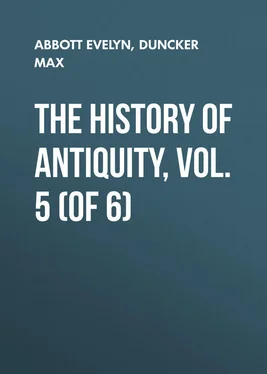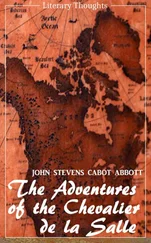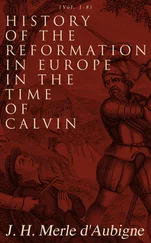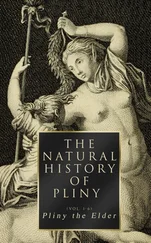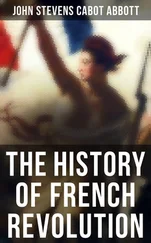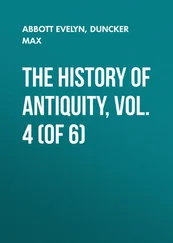Evelyn Abbott - The History of Antiquity, Vol. 5 (of 6)
Здесь есть возможность читать онлайн «Evelyn Abbott - The History of Antiquity, Vol. 5 (of 6)» — ознакомительный отрывок электронной книги совершенно бесплатно, а после прочтения отрывка купить полную версию. В некоторых случаях можно слушать аудио, скачать через торрент в формате fb2 и присутствует краткое содержание. Жанр: foreign_antique, foreign_prose, Историческая проза, на английском языке. Описание произведения, (предисловие) а так же отзывы посетителей доступны на портале библиотеки ЛибКат.
- Название:The History of Antiquity, Vol. 5 (of 6)
- Автор:
- Жанр:
- Год:неизвестен
- ISBN:нет данных
- Рейтинг книги:4 / 5. Голосов: 1
-
Избранное:Добавить в избранное
- Отзывы:
-
Ваша оценка:
- 80
- 1
- 2
- 3
- 4
- 5
The History of Antiquity, Vol. 5 (of 6): краткое содержание, описание и аннотация
Предлагаем к чтению аннотацию, описание, краткое содержание или предисловие (зависит от того, что написал сам автор книги «The History of Antiquity, Vol. 5 (of 6)»). Если вы не нашли необходимую информацию о книге — напишите в комментариях, мы постараемся отыскать её.
The History of Antiquity, Vol. 5 (of 6) — читать онлайн ознакомительный отрывок
Ниже представлен текст книги, разбитый по страницам. Система сохранения места последней прочитанной страницы, позволяет с удобством читать онлайн бесплатно книгу «The History of Antiquity, Vol. 5 (of 6)», без необходимости каждый раз заново искать на чём Вы остановились. Поставьте закладку, и сможете в любой момент перейти на страницу, на которой закончили чтение.
Интервал:
Закладка:
At the foot of the mountain barrier, towards the northern steppes, and on the edge of the steppes of the Oxus, to the north of the Hyrcanians, Parthians, and Margiani, in a land which only partially admits of agriculture, lay the Chorasmians, a people partly stationary and partly migratory – the Uvarazmiya of the Achæmenids, the Hvairizem of the Avesta. Further to the east, where the edge rises to the lofty Hindu Kush, there lies on its northern slope a favoured district in the region of the Upper Oxus. That river flows from the table-land of Pamire, which lies more than 15,000 feet above the sea, exactly at the point where the Hindu Kush abuts on the Belurdagh, the western edge of the central table-land. On the banks of the river, which flows in a north-westerly direction, extend broad mountain pastures, where support is found in the fresh mountain air for numerous herds of horses and sheep, and beneath the wooded hills are blooming valleys. On these slopes of the Hindu Kush, the middle stage between the table-land and the deep plain of the Caspian Sea, lay the Bactrians – the Bakhtri of the Achæmenids, the Bakhdhi of the Avesta. Curtius, following the accounts of the companions of Alexander, tells us of the land of the Bactrians that it was much diversified in character; in one part were pastures, another was rich in beautiful fruit-trees and vines, and frequent springs watered the rich soil, on which corn was cultivated. These districts supported a large number of oxen and horses. Under the range of Paropanisos ( i. e. on the slope of the Hindu Kush) lay the city of Bactra, on the river of the same name, which washed its walls. But a great part of the country was covered with waste tracts of sand. If the winds blew from the Caspian Sea, they swept the sand into high hills, under which not only did every trace of the road disappear, but travellers were at times overwhelmed; and, as if voyaging by sea, it was necessary to guide the course by the stars. 13 13 Curt. 7, 4.
Strabo remarks, after Apollodorus of Artemita, that Bactria was the best part of East Iran (Ariana). In ancient times the Bactrians were hardly distinguished from nomads; but their land was extensive, and produced fruits of all kinds, with the exception of the vine. The fertility of the land enabled the Hellenic princes to make great conquests. Their cities were Bactra, traversed by the river of the same name, Darapsa, Aornus ( avarana , i. e. protection), Kariata, and many others, and besides these cities, the Bactrians had citadels on lofty rocks. 14 14 Strabo, pp. 118, 516, 682; Arrian, "Anab." 3, 29. On Aornus, cf. Vol. IV. p. 395.
According to Strabo, Bactra was also called Zariaspa, and Pliny asserts that at any rate in earlier times it was called by that name. In Arrian Zariaspa is the largest city of Bactria, while Ptolemy places Zariaspa to the north of Bactra, on the bank of the Oxus. Zariaspa means golden horse. A river might possibly be known by such a name, but hardly a city, unless it belonged to a tribe of the name of Zariaspians, and was inhabited by them. In fact Ptolemy places the tribe of the Zariaspians in his Zariaspa. 15 15 Ptolem. 6, 11; 8, 7; Strabo, pp. 514, 516; Arrian, "Anab." 3, 29; 4, 1, 16, 22; Plin. "Hist. Nat." 6, 17, 18; Steph. Byz. sub voc. Firdusi mentions a hero Zarasp.
The air on these north-western terraces of the Hindu Kush is warm, and the soil sufficiently vigorous, under irrigation, to produce rice and southern fruits. Eight leagues below the snow-fields of the mountains, which resist even the hottest months of the year, two good leagues to the north of the place where the Dehas, after forcing a passage through the last heights, reaches the plains, lies the city of Balkh, on the banks of that river. At this day it is a town only partially inhabited; but the ruins of the ancient city are said to cover a circuit of several leagues. The adjacent soil is now well cultivated; the fields are thickly planted with trees, and beside old water-courses, now dried up, and extensive ruins of yet older aqueducts, eighteen channels still convey their rills to fields under active cultivation. 16 16 Elphinstone, "Kabul," 2, 213, 214.
North of the Bactrians, beyond the Oxus, on the western slope of Belurdagh, in the valley of the Polytimetus (Zarefshan, i. e. strewing gold), which flows towards the Oxus from the east, but, instead of joining it, ends in Lake Dengiz, lay the Sogdiani of the Greeks, the Suguda of the Old Persian inscriptions, and Çughdha of the Avesta, in the region of the modern Sogd. As the Oxus in its upper course separates the Bactrians from the Sogdiani, the Jaxartes, further to the north, separates the latter from the Scyths. According to Strabo, the manners of the Bactrians and Sogdiani were similar, but the Bactrians were less rude. 17 17 Strabo, loc. cit.
Maracanda (Samarcand), the chief city of the Sogdiani, on the Polytimetus, is said to have had a circuit of 70 stades in the fourth century B.C. The soil is not without fertility, but the climate varies between great heat and severe cold.
Herodotus observes that the Bactrians, who carried bows of reed and short lances, closely resembled the northern Indians in armour, clothing, and mode of life, and then informs us that the Areians, Parthians, Sogdiani, and Chorasmians resembled the Bactrians. All these tribes of the east, according to the account of Herodotus, carried the Indian bow of reed; the Areians alone used the Median bow, which Herodotus states to have been in vogue not only among the Medes, but also among all the nations of Western Iran. He adds that in ancient times the Medes were called Areians by all men. Strabo uses the name Ariana for the land of all the nations of Iran, except that of the Medes and Persians, i. e. for the whole eastern half of Iran. 18 18 Herod. 7, 62; Strabo (pp. 516, 517, 724) includes in Ariana, Gedrosia, Arachosia, Drangiana, Paropanisus, Aria, Parthia, and Caramania. Cf. Pausan. 2, 3, 8.
In Diodorus also the nations of Eastern Iran are Arians. 19 19 Diod. 1, 94. Damascius ("De Primis Principiis," p. 384) speaks of the Μάγοι δὲ καὶ πᾶν τὸ ἅριον γἑνος.
The Avesta, which, as we shall show, belongs to the east of Iran, calls its native land Airyao Dahvyu , i. e. abode of the Airyas; or Airyao Danhavo , i. e. land of the Airyas, in contrast to the Anairyao Danhavo , i. e. the non-Arian lands. 20 20 "Vendid." 19, 132; "Mihr Yasht," 4, 13; "Tistar Yasht," 9, 56, 60.
In his inscriptions king Darius styles himself "a Persian, son of a Persian, an Arian ( ariya ) of an Arian tribe," 21 21 Naksh-i-Rustem, a., 14.
and therefore the name must have held good of the west of Iran also, and have included all the nations of Iran, though afterwards it continued in use more especially for the tribes of the east. The inhabitants of the modern Persian kingdom call their kingdom by the general name of Iran. Iran is only the regular new Persian form of the old name, which in the west was pronounced Ariyana, and in the east Airyana.
We remember that the ruling nation of India called themselves Arya, and this name compared with Airya and Ariya shows us that the nations of Iran assumed the same title with very little difference. Among the Greeks Ariya and Airya became Areioi and Arioi, and the name of the land, Ariyana and Airyana, became Ariana. We have learnt the meaning of the names Aryas, Ariyas, Airyas; they signify "the noble or ruling people" (IV. 8). Much the same is the sense of the name Artæans, 22 22 Herod. 7, 61. Cf. Steph. Byz. Ἀρταία.
which, according to the assertion of Herodotus, was the title by which the Persians called themselves; it signifies "the exalted," or "mighty." The Persians may have assumed it after they became the ruling people in Iran and Hither Asia.
Интервал:
Закладка:
Похожие книги на «The History of Antiquity, Vol. 5 (of 6)»
Представляем Вашему вниманию похожие книги на «The History of Antiquity, Vol. 5 (of 6)» списком для выбора. Мы отобрали схожую по названию и смыслу литературу в надежде предоставить читателям больше вариантов отыскать новые, интересные, ещё непрочитанные произведения.
Обсуждение, отзывы о книге «The History of Antiquity, Vol. 5 (of 6)» и просто собственные мнения читателей. Оставьте ваши комментарии, напишите, что Вы думаете о произведении, его смысле или главных героях. Укажите что конкретно понравилось, а что нет, и почему Вы так считаете.
